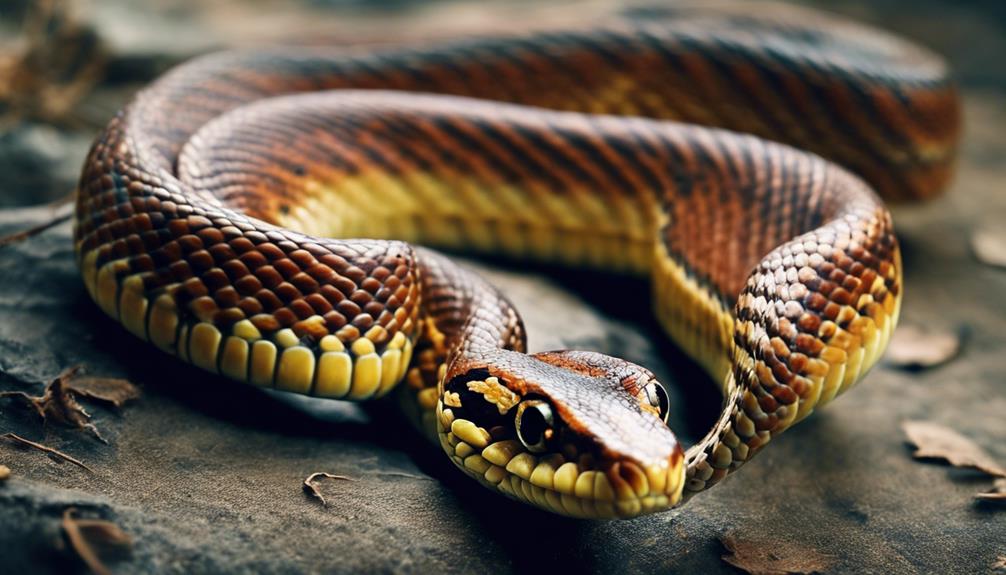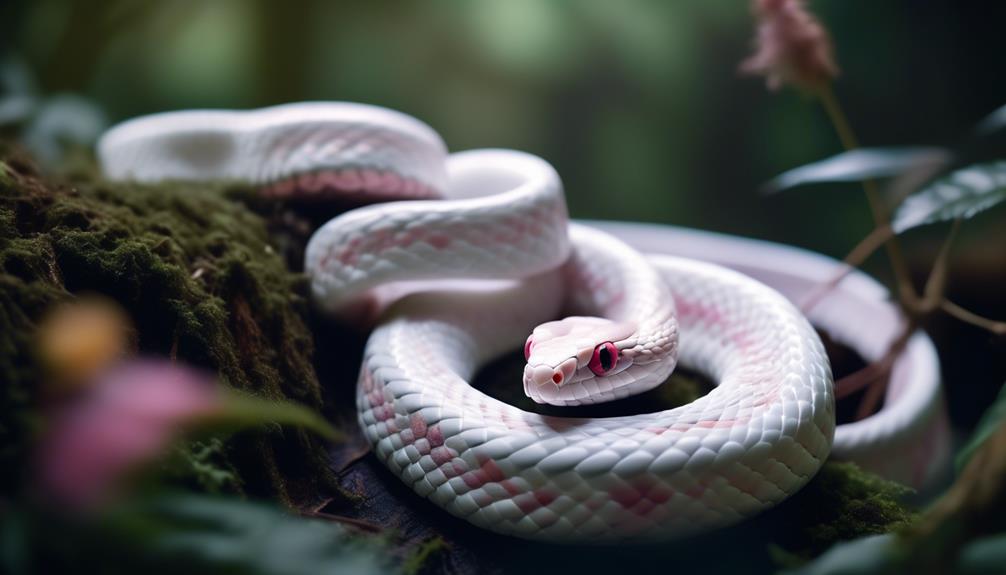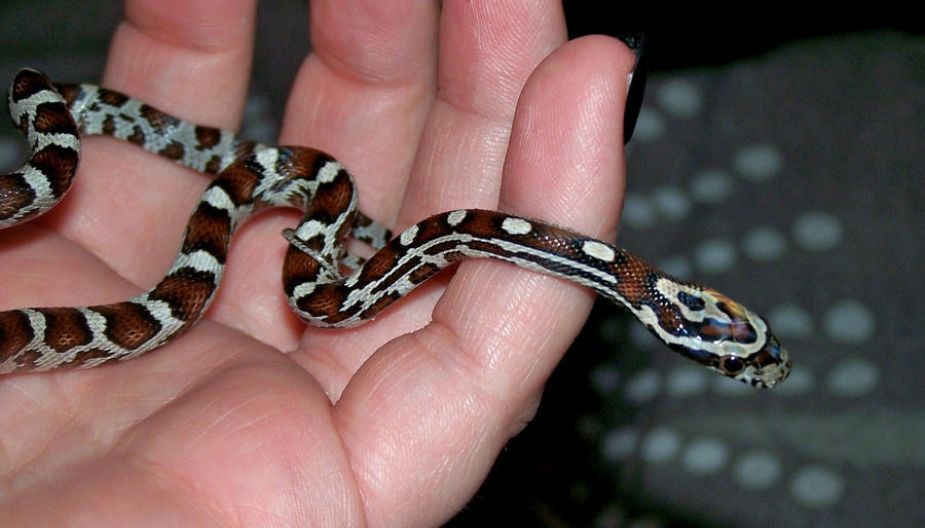Are you curious about whether your corn snake could be underweight? Recognizing the signs of an underweight corn snake is crucial for their health and welfare. By observing subtle indicators in their physical appearance and behavior, you can ensure your pet’s well-being.
Continue reading to learn the primary signs that could indicate your corn snake requires additional attention.
To identify if a corn snake is underweight, look for a prominent spine and visible ribs. An underweight corn snake will have a triangular body shape rather than a rounded one.
Physical Appearance Indicators
Visible ribs and spine on a corn snake are clear indicators of being underweight. An underweight snake may exhibit sunken eyes, lack muscle tone, and have a reduced appetite.
When examining a corn snake, pay close attention to its skin – wrinkled skin is often a critical sign of being underweight. The body weight of a snake can be determined by observing its overall appearance, including the condition of its scales and body shape.
An underweight snake may have a visibly thinner body compared to a healthy snake. Additionally, the lack of muscle tone and definition in an underweight snake can be noticeable when observing its movements and overall posture.
If a corn snake shows reduced appetite along with these physical indicators, it’s vital to take steps to address its weight and overall health promptly. Remember, a healthy corn snake should exhibit a robust body structure with well-defined muscle tone and a smooth, unwrinkled skin texture.
Behavioral Clues
When evaluating the health of a corn snake, pay attention to any changes in their typical activity levels as it can provide valuable insights into their well-being. An underweight corn snake may exhibit reduced activity levels compared to a healthy snake. They might appear lethargic, with decreased movement and exploration.
Additionally, sunken eyes can be a sign of an underweight corn snake, indicating dehydration and a lack of body fat reserves. Visible ribs and spine are also important indicators of an underweight snake. Healthy corn snakes should have smooth, shiny skin with well-defined muscle tone. Lack of muscle tone and weakness can suggest that a corn snake is underweight, lacking the necessary body condition.
Observing your snake’s behavior during feeding can also provide clues; a reduced appetite or reluctance to eat may signal an underweight condition. Monitoring these behavioral clues alongside physical signs such as skin condition, ribs, and spine visibility is essential in determining if your corn snake is underweight.
Feeding Patterns
How can you evaluate the feeding patterns of a corn snake to determine if it’s underweight?
Corn snakes typically have a healthy weight when they’re fed on regular feeding schedules with appropriately sized prey. An underweight snake may exhibit signs such as visible ribs and spine, indicating a lack of body fat reserves. Observing the snake for signs of reduced muscle tone and energy can also help identify underfeeding issues. Additionally, sunken eyes and wrinkled skin are visible indicators that the snake may be underweight.
Monitoring the snake’s body condition regularly by evaluating its overall appearance and behavior can provide insights into its feeding patterns. If you notice a lack of interest in food, irregular feeding schedules, or a reluctance to eat, these could be signs that the snake isn’t consuming enough to maintain a healthy weight. By closely monitoring the snake’s feeding habits and physical condition, you can better determine if it’s underweight and in need of dietary adjustments.
Weight Monitoring Techniques
To effectively monitor the weight of a corn snake, regularly assess its body condition for visible indicators of essential status. Check for visible ribs and spine to determine if the snake is underweight. A healthy snake should have a defined body shape with minimal protrusion of the ribs. Additionally, observe the skin between the scales for any wrinkles or looseness, as this could be a sign of the snake being underweight.
Look for a lack of muscle tone in the snake’s body structure, which may indicate insufficient body mass. Pay attention to the snake’s eyes for any sunken appearance, as this is another potential sign of underweight conditions. Monitoring the snake’s feeding behavior and appetite is vital; a reduced intake or lack of interest in food could suggest that the snake is underweight.
Health Implications
An underweight corn snake may experience various health implications due to inadequate nutrition and insufficient body mass. When a corn snake is underweight, it can suffer from:
- Sunken eyes are a clear sign of dehydration or malnourishment.
- Lack of muscle tone, indicating an underweight condition.
- Reduced appetite, potentially signaling underlying health issues or insufficient feeding.
- Wrinkled skin, is a visual cue of being underweight and possibly dehydrated or malnourished.
- Visible ribs and spine, suggestive of underweight status and a lack of proper nutrition.
These health implications can lead to a range of issues for the underweight corn snake, affecting its overall well-being and longevity.
It’s important to address these signs promptly by providing appropriate care, nutrition, and monitoring to help the snake regain its health and ideal body condition.
Frequently Asked Questions
How Do I Know if My Corn Snake Is Underweight?
To determine if your corn snake is underweight, observe weight loss indicators like tail size, rib visibility, body condition, appetite changes, skeletal structure, muscle definition, skin elasticity, energy levels, and overall health. These signs help assess your pet’s well-being.
How Can You Tell if a Snake Is Thin?
If a snake appears thin, check for body conditions like weight loss, muscle definition, rib and spine visibility, and tail taper. Sunken eyes, lack of appetite, and behavioral changes indicate potential issues. Consult a vet for proper assessment.
Why Is My Corn Snake So Skinny?
If your corn snake is skinny, weight loss can stem from various factors like dietary needs, health concerns, or appetite changes. Consider environmental factors, feeding schedule, behavioral patterns, monitor progress, seek veterinary care, and use nutritional supplements.
How Often Should I Feed an Underweight Corn Snake?
To guarantee proper weight gain and health for your underweight corn snake, consult a reptile vet for tailored nutrition requirements. Develop a feeding schedule with appropriate meal sizes, consider feeder options, track growth on a chart, and address supplement needs to mitigate health risks effectively.
Conclusion
Congratulations, you’ve now mastered the art of identifying signs of an underweight cornsnake! Remember, a healthy snake is a happy snake. Keep a close eye on their physical appearance, behavior, feeding patterns, and weight to ensure they’re thriving.
And don’t forget, a well-fed snake is a content snake, so make sure to provide them with the proper care and nutrition they need.
Keep up the great work, snake enthusiasts!


